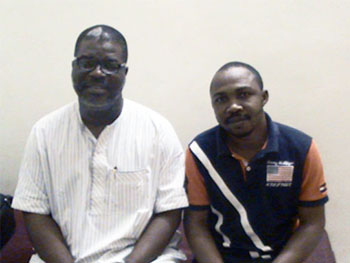Bone Marrow Transplant for Sickle Cell Anemia Treatment Cost In India
Overview
It is said that the human body can survive with an artificial heart, but it cannot survive with artificial blood. There is no such thing as artificial blood as there is no substitute for the blood that courses through our body carrying with it the required proteins, glucose, hormones, nutrients, electrolytes and gases. The blood is responsible for carrying oxygen to different parts of the body from the heart and also to protect the body from any foreign objects trying to enter the body that may cause infection or illnesses.
What is Sickle Cell Anaemia?

Sickle cell disease (SCD) is a group of inherited disorders that affect the haemoglobin (a protein in the red blood cells that is responsible for carrying oxygen to the tissues in the body). The most common type of sickle cell disease is sickle cell anaemia. In the
human body, the red blood cells are usually round and flexible which allows them to move freely through the blood vessels without causing a clot or obstructing the path. In sickle cell anaemia, the defective haemoglobin (called Haemoglobin S) replaces the regular haemoglobin (Haemoglobin A) forcing the smooth round shaped red blood cells to get morphed into a crescent moon or sickle shape. The normal round red blood cells move easily because of their smoothness, but the sickle cell red bloods become very stiff, rigid and sticky.
Free Consultation
What happens in Sickle cell anaemia?
The irregularity in the shapes of the red blood cells causes them to get clustered together and being unable to move. This in turn results in the sickle cells getting stuck in the blood vessels (usually small vessels) like arteries and capillaries which can block or hinder the supply of normal oxygen-carrying blood to some parts of the body. Since the sickle-shaped cells are not flexible and cannot change their shape easily, many of them burst apart while moving through the blood vessels. The sickle cells can last from 10-20 days while the normal blood cells last for 90-120 days. This causes a rapid loss in red blood cells (as the sickle cells are still red blood cells, deformed as they may be) which the body may not be able to recuperate as swiftly from. This condition of sickle cells dying in smaller duration than required is what causes the phenomenon called anaemia.
Complications in SCD
The anaemic sickle cells get stuck everywhere they travel to and causing a delay on the oxygenated blood to reach to the organs and sometimes the blood is totally obstructed in its path by the walls of sickle cell clotting. This can result in painful episodes due to the severe pain exerted by the blocked sickle cells and even organ damage, especially in spleen, kidney, lungs and brain. The anaemia comes with its own set of problems like fatigue, shortness in breath, delayed or less growth in children and development complications. Another complication that comes from sickle cell is high blood pressure in the blood vessel that is connected to the lungs. This phenomenon is called pulmonary hypertension and can occur in 33% of the children suffering from sickle cell. Pulmonary hypertension is a complex disorder which can lead to heart failure.
Cost of Sickle Cell Anemia Treatment in India
The average Cost of Sickle Cell Anemia Treatment in India is around Rs.16,00,000 ($20,000) to Rs.32,00,000 ($40,000). The cost depends on several factors like the type of procedure, surgeon's fees, hospital charges and other associated costs.
List of Best Hospitals for Bone Marrow Transplant for Sickle Cell Anemia in India
- Fortis, Delhi
- Max Healthcare Hospital, Delhi
- Apollo Hospital, Delhi
- Blk Super Speciality Hospital, Delhi
- Medanta Hospital, Gurgaon
- Paras Hospital, Gurgaon
- Kokilaben Dhirubhai Ambani Hospital, Mumbai
- Jaslok Hospital, Mumbai
- Sir H N Reliance Foundation Hospital, Mumbai
- P D Hinduja Hospital and Medical Research Centre, Mumbai
- Patel Hospital, Mumbai
- KIMS Hospital, Hyderabad
- Continental Hospital, Hyderabad
- Manipal Hospital, Bangalore
- Global Hospital, Chennai, Tamil Nadu
- Columbia Asia Hospital, Bangalore
- Aster Medcity, Kochi Kerala
- Belle Vue Clinic, Kolkata
- CIMS, Gujrat
- Ruby General Hospital, Kolkata
- Miot International, Chennai, Tamil Nadu
- Rajiv Gandhi cancer Institute & Research Centre, Delhi
- Sahyadri Hospital, Pune
- Jupiter Hospital, Thane, Maharashtra
- Pushpawati Singhania Hospital & Research Centre, Delhi
- Artemis Hospital, Gurgaon
- Lilavati Hospital, Mumbai
- Narayana Health, Bangalore
- Nanavati Super Speciality Hospital, Mumbai
- Amrita Hospital, Kochi
List of Top Bone Marrow Transplant for Sickle Cell Anemia Surgeons in India
- Dr. Rahul Bhargava
- Dr. Aniruddha Dayama
- Dr. Ashok Kumar Vaid
- Dr. Nitin Sood
- Dr. Vimal Kumar G
- Dr. Ashish Dixit
- Dr. Pravas Chandra Mishra
- Dr. Rahul Naithani
- Dr. Gaurav Dixit
- Dr. Mansi Sachdev
- Dr. Suresh Advani
- Dr. Kannan Subramanian
Request your appointment with the Top Bone Marrow Surgeons in India at the Best Bone Marrow Transplant Hospitals in India.
Phone Numbers Reach Us India & International:
+91 9765025331
Preliminary diagnosis for Sickle Cell Anaemia
The type of treatment that is required for the suffering patient will be decided depending on a number of influential factors like
- The patient’s age, overall health and the medical history
- Tolerations or allergies to specific medications, therapies or procedures
- Severity of the ailment
As of yet, Bone Marrow Transplant or Stem cell Treatment is the only known treatment for any sickle cell disease. But having a bone marrow transplant is still not considered a complete cure. This procedure is to delay the sickle cell or to prevent the effects that come with the disease. These transplants are complex and risky procedures and may have serious side effects as well. Hence, these procedures are only used in children that are suffering from severe sickle cell disease. This transplant may work as desired if the donour is a close match to the patient. The preferred donour is usually the brother or the sister of the patient.

Susan Williams, Nigeria
"I'm Susan Robbins, I was diagnosed with sickle cell anemia since a very young age as both of my parents are sickle cell anemia trait there was a 1 in 4 chance that I will have sickle cell disease (SCD). I have been in and out of the hospital all my entire life and use to have really bad pain crisis. After the bone marrow transplant procedure everything has changed, even my attitude towards life is completely changed. Somehow I survived all that pain and after this life changing bone marrow transplant procedure, I look forward to new experiences and dream about all those things that I can do to embrace this life. I can’t thank India Organ Transplant enough for being the best travel partners for my medical trip to India."
SCD Treatment
Treatments are usually used to relieve any symptoms, pain, complications and to prolong life. These treatments include procedures like
- Pain Relief Medications: Medications may be used to relieve the patient of acute or chronic pain
- Hydroxyurea: This medication has been shown to reduce or prevent several complications that are linked to sickle cell disease. This medication increases the amount of fetal haemoglobin in the blood. There is a slight disadvantage namely that this medicine is not suitable for everyone
- Antibiotics: Antibiotics are usually used for the prevention of unnecessary infections and complication in young children
- Another process for the prevention of infections is sometimes instilled which is called childhood immunization
- Blood Transfusions: This treatment is pertained when the severity and the progression of the disease is at a critical level. Complications such as severe anaemia, stroke may make a patient be qualified for a blood transfusion
- Bone Marrow Transplant: Bone marrow is a fatty, soft tissue present inside the bones. The purpose of bone marrow is to produce blood cells. Bone marrow transplant (BMT) or stem cell treatment is a complex procedure that involves the extraction of the stem cells from the bone marrow and then those cells are filtered and then inserted back into the patient who may either be the donour of the cells or the cells may be extracted from someone else. BMT is done to replace the damaged bone marrow cells with healthy bone marrow cells.
For the patient to maintain the highest possible optimum health, regular medical care and check-up, healthy lifestyle and avoiding situations that might result in a pain crisis are necessary.
Why choose India to have your Bone Marrow Transplant?
India is gaining fame in the world for being the best place to undergo any type of medical treatment. The medical facilities available in India have seen advancements by leaps and bounds. The advanced technology that can be availed in the hospitals in India is also on par, if not better than that of the more developed nations of the world. The surgeons in India are also known for being the one of the best in their respective medical specialty having acquired experience in complex procedures by performing said treatments in countries like France, Canada, USA, UK, Netherlands, Germany and many more. The bone marrow transplant treatment cost in India is very less when compares to that of the western countries, sometimes being just a fraction of the same procedure in other countries.
Phone Numbers Reach Us India & International:
+91 9765025331
Our Success Stories
Mr.Abba Mehmoud Musa, Sudan
Sudan Patient's Successful Liver Transplant Journey to India
Many a times due to certain reasons like excessive alcohol, fat deposit or any other complication, the liver gets damaged...
Read More
Mr. Sartaj Musumonov, Uzbekistan
Success Story of Bone Marrow Transplant Surgery in India
It is extremely difficult to understand the medical situation if one is not from a medical background. Here is one more...
Read More
Mr. Abubakar Abdullahi Jam, Nigeria
A New Phase of Life after Kidney Transplant Surgery India
Mr. Abubakar Abdullahi Jama was mournful due to high constant fever, diarrhea, and vomiting. He felt that it was normal...
Read More










